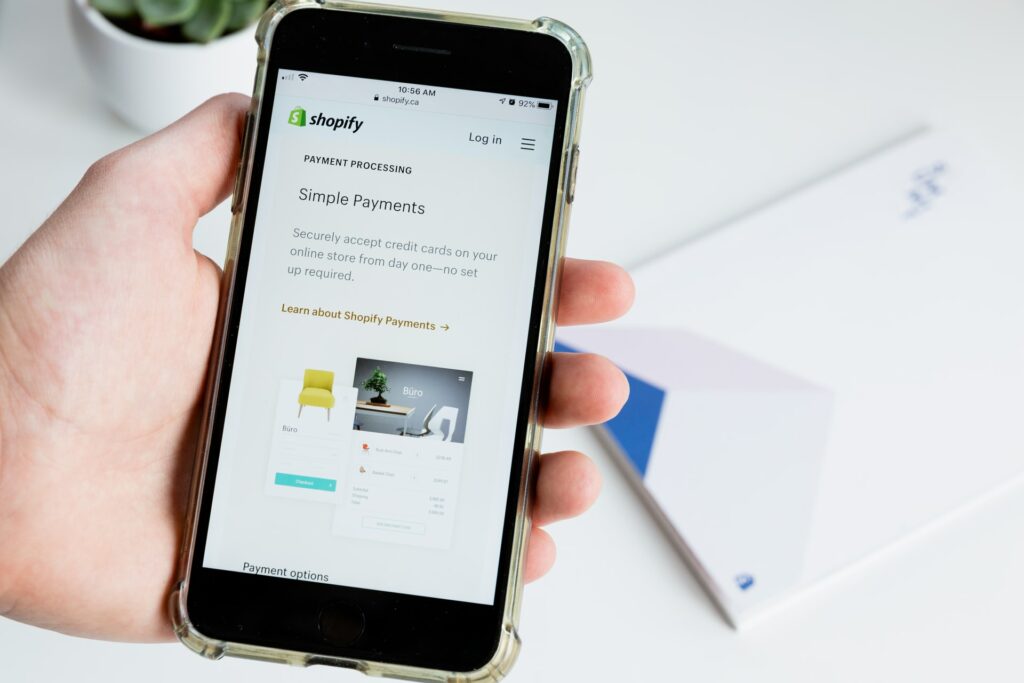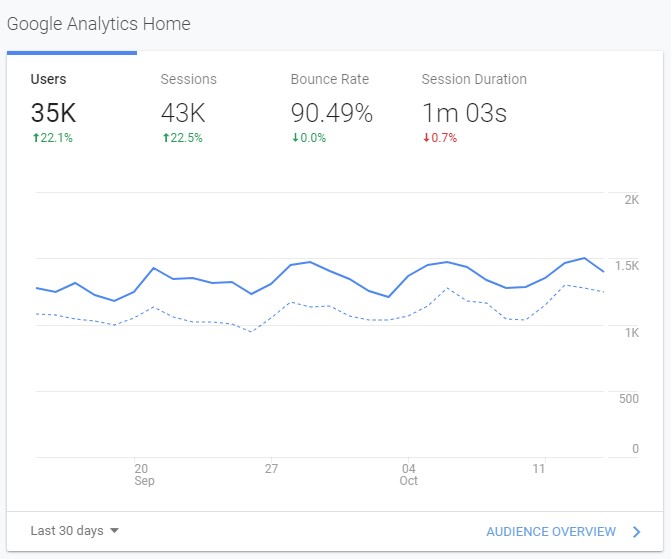The internet has forever changed the way we look at business and opened doors that, many years ago — didn’t even exist. For an online entrepreneur, it doesn’t get any better than this.
But with the many opportunities that arise, comes the task of finding the “right” model for your business. The perfect fit, if you will.
I say “your business”, but really I mean you. As you may have noticed, a common theme on my blog involves building a lifestyle business, and more specifically one that enables you to be location independent.
Yes, it’s absolutely important to make sure your business is catering to the needs of clients or customers, but my experience as an entrepreneur tells me that not all business models are suitable for all founders.
Above “product-market fit” is “founder-product-market fit.”
– Naval Ravikant
It doesn’t matter if you’re wanting to go big or earn money to supplement your day job by starting an online side hustle, finding the best internet based business is different for each individual.
Maybe you enjoy the high margins and constant communication involved in running an advertising agency business model that operates remotely over the internet. Or maybe the semi-passive nature of affiliate marketing is where you find your calling.
In this article, I’ll do my best to throw some light on the different online business models that could work for you along with the insight I’ve gained along the way.
The Four Digital Marketing Models
Before we dive into all the different types of online business models, let’s take a look at the fundamentals that shape how online businesses work.
I’m making a fairly strong point in this article that when it comes to online business, marketing is the core functionality you need to master. Even in traditional businesses, marketers are increasingly appointed as CEOs. This is no coincidence.
For your online business to be a success, you first need to:
- Choose a marketing model that meets your personal goals and strengths
- Identify which marketing model best fits your digital business model
- Develop the necessary capabilities you need to make it happen
Which brings us to the four digital marketing models…
Customer Experience Designing
The way that a customer perceives and interacts with your brand plays a big role in conversions and brand loyalty.
As the name suggests, this marketing model puts a lot of weight on the experience that a customer has while interacting with a brand. Using the data and insights from customers itself, these designers go on to create a fulfilling brand experience — winning hearts (and sales) in the process.
Traditional examples of these are airlines, hotels, retailers, though many of them have been doing a bad job of this lately. Better examples these days include brands like Ferrari, Lululemon, and Whole Foods.

These companies pride themselves on customer satisfaction. When you buy from them, you’re not a consumer, you’re part of the family.
Demand Generation
Creating a demand for products and services can be a challenging thing to do. You have to meet the consumer at the right time and introduce them to your brand in a way that can effectively drive conversions.
With demand generation, the focus lies more on driving either large volumes or highly targeted online traffic (or both) and converting as much as possible into sales.
Demand generation involves promoting their online business using multiple digital marketing channels, such as:
- Advertising (display, search, social media, and other ads)
- Content marketing/SEO
- Email marketing
- Social communities
Sure you need great content to drive engagement and demand, but those who use this model are laser-focused on generating conversions. This ultimately leads to high conversion rates.

Because of how result-driven demand generation is, I find this marketing model to be the easiest for me. I like to get in the mindset of the customer and think about what they need and when. This helps me to interact with the right people at the right time.
I mean, who wants to spend 16 months trying to close a time waster when the guy next door is desperate to buy? Been there, done that, didn’t make any money!
Digital Branding
With digital branding, companies use creative and strategic ways to tell potential customers:
- Who they are
- What their business is about
- What customers can expect from them
Building a brand identity is the main focus here. As if the marketing lingo I use on this website isn’t already the height of pretentiousness, consider the term “omnipresent”.
I think it’s Latin or something for “these mofos are everywhere”. These brands have representation on what seems like every platform, and on a huge range of topics.
One of my favorite examples of this is HubSpot. There must have come a time where their CMO gave a directive of “just blog about anything vaguely related to business”.

Neil Patel is another one. As if blogging about every marketing topic in a myriad of languages wasn’t enough, he bought and built SEO tools too. The end result? Full screen interstitials as far as the eye can see.
Seriously though, these brands want to be everywhere their target audience looks.
Simply put, digital branding allows companies and marketers to focus on building brand equity and deeper consumer engagement via this marketing model.
Sure, having a great product or service plays a role here, but how many sales CRMs and marketing service providers are out there? Impressive digital branding helps these businesses to really stand out from the crowd.
Product Innovation
While other marketing models use customer insights to sell their products, product innovators use this data to develop new and improved products and services.
If your product or service serves an innovative way of solving a problem, your chances of thriving are much higher.
Product innovation involves gathering insights from consumers to help shape the innovation process.
This helps businesses create new opportunities, breaking out of the ordinary and truly differentiating their products, rather than just putting a different label on the same thing, like most businesses do.

Examples of Internet Business Models
While some business models face more challenges than others, it eventually comes down to playing to your strengths and defining your goals well. What may take you one year, may take someone else a decade.
I’m a sucker for doing things the hard way, but now that I have a child, I don’t want to waste time. There’s so much “busy work” prescribed to entrepreneurs that simply doesn’t need to be done.
If there’s something you want in life like time or location freedom, why not take the most direct route?
To understand this better, I’ve listed some of my favorite online business models. Some are more profitable, some are riskier, others need sales calls, and so on.
This list by no means includes every digital business model ever, rather it has some examples that could be a good fit if you’re starting out.
Affiliate Marketing
Affiliate marketing is all about building an audience and selling other people’s products or services to them. It’s either extremely fast or brutally slow — it all comes down to which route you take.
I’ve long been risk adverse and never had much capital to begin with, so my preference is to build and grow affiliate marketing websites using SEO, or “organic search engine traffic”.
This means your traffic acquisition channel is “free”, as long as you’re willing to do the work. As you grow, “free” can turn into a sizable operational expense, but generally SEO is the cheaper option. It’s usually the slow option, though.
A faster way to reach the 7 figure mark — if you can find the right products and offers, is by using paid traffic. So if you’re familiar with how PPC works, either via search engines, social media or display, affiliate marketing is an interesting place to put that knowledge to good use.
In comparison to other business models, affiliate marketing using paid traffic doesn’t have to demand as much of your effort — but that doesn’t mean the stakes aren’t high. It can take a long time to find the right offer. By this time, many inexperienced affiliate marketers have run their resources dry.
Other risks include going bankrupt before your affiliate network pays you (quite possible when you’re investing so much in ads and some have 90 day payout terms), your traffic sources ban you, or someone copies your entire campaign and forces you into slimmer margins.
There’s a reason why a lot of people in this space are ex-poker players. The concepts learned, like reducing your risk of ruin, lends itself to this business model.

Agency
The agency model takes care of one of the biggest problems consultants and freelancers face — the ability to scale up. Fast.
Most agencies have a lot more to offer in terms of services they offer, which is why clients pick them. Instead of co-ordinating 5 different freelancers to each complete their part of the puzzle, agency clients prefer to have one contact that manages the entire project/campaign.
From advertising, SEO, web development, and much more — the sky’s the limit as long as you have the right people to get the job done. A particularly popular business model right now is being a content provider to businesses who want to market themselves on the internet but don’t have the in-house capability.
You could argue that this is one of the best online businesses if you plan to start with no money down. Simply invest blood, sweat and tears, and and with consistent effort, the cash will come as it’s also one of the most profitable online business models.
The cons with the agency model are that you can end up spending way too much time and money managing your team instead of growing. For agencies without a proper organizational structure, this can be a nightmare.

As you may have gathered, agencies need a lot of hard work to keep them afloat. As a result, they are not as easy to sell as the other options below.
For someone who’s looking at a more passive source of income, this probably isn’t the ideal option. I basically hated running an agency, but in around 2 years it allowed me to save a good runway to pump into my freedom fund.
Blogging / Content Sites
Building websites and getting them to rank well in search engines is no easy feat. Starting a blog is the easy part. Writing great content is a bit harder, but a lot of fun. Growing it to a sizable amount each month can be a grind.
But once you get there, your website has the potential to bring you a continuous stream of semi-passive income.
I say semi-passive because like all businesses, blogs and content sites still need maintenance. This can be things like publishing fresh content, updating existing content, and content management system updates.
But unlike running a digital marketing agency, this business model doesn’t require you to have a big team.
I know plenty of solopreneurs who run blogs and content sites. Others have a small team who handle the most repeatable tasks.
After I began investing in websites a few years ago, I still only have 7 people in my team. For a larger portfolio, the team needs to be much larger (or to leverage other service providers) if you want to scale quickly.

What I love about these sites is how versatile they are. You can pick and choose from several monetization strategies, such as:
- Affiliate programs
- Display advertising
- Renting it to local businesses
- Selling your own products after your audience is built
You don’t even have to own them for long. Flipping websites is a popular practice where you buy sites to improve, then sell them for a profit.
Though the margins aren’t as nice as an agency, blogging can make for very profitable online businesses once you’re established.
Please note: there’s a lot of cross over here with affiliate marketing, assuming you’re using SEO as your main traffic source.
Dropshipping
What if you could make a sale through your online store without actually owning any inventory? It looks like a typical ecommerce store, but outside of a website, the business has no physical presence and you don’t handle any physical products. This is dropshipping.
After making a sale, you place an order with a supplier who then ships it to your customer, on your behalf.
With dropshipping, many things can go right — and equally wrong. While it may seem like the easy route to making money, there’s a fair amount of effort involved in the entire process.
If you’re selling high-value goods, this can scale up very quickly. As you don’t have to own any inventory, profit margins can be great.
On the downside, however, dropshipping is a true exercise in learning about control. Even with automation in place, it’s rarely smooth sailing.
Your suppliers can run out of stock at the last minute, or ship using a very slow method, leaving you to try and patch things over with your customers. This can then cause your payment processor to block you for a high rate of chargebacks.

If you’re prepared to stick around for the long haul and find both winning products and suppliers, this can be one of the most profitable routes to take, but it’s not as simple as many gurus will have you believe.
Selling Info Products / Online Courses
Of the many things that are readily available on the internet, the demand for info products is only growing. There are many mediums that you can choose to work with, like:
- E-books
- E-learning and courses
- Webinars
- Digital reports
- Podcasts
Info products have high margins and, if you do most of the grunt work yourself, low-set up costs.
Most importantly, you own the product so you don’t have to worry about getting paid on time by affiliates or dropship fulfillment companies that are out of stock.
Once you’ve created your product, you can build the marketing systems around your product so your business makes sales while you sleep.
This said, it’s not always simple. Most people I know who make this model work well seem to have webinar software Zapiered to their email marketing system which connects to something else via API and so on.

Content creation isn’t for everyone. While I enjoy it myself, I have friends who sell digital products and don’t even create the content.
Finding a content provider to build these products for you isn’t particularly difficult, and may be the right path to making this business model work at scale.
If you have unique experience on a subject, selling info products is a great way of creating a valuable asset.
Services Arbitrage aka “Drop Services”
In many business models, growth is directly proportional to the amount of work you put in. This can be problematic once you reach a limit to how much you can do, even with all the resources and finances available.
A service arbitrage business works on a different principle.
You’re essentially a middleman that connects clients to service providers, making a profit off every service sold.
Some of the popular services offered under the service arbitrage model are:
- content writing
- graphic design
- legal services
- podcast editing
- video production

On face value, this can feel a bit shady, but as I meet more and more people running this type of business, I see the value that they bring.
Essentially they are the conduit between people who do great work (but don’t know how to sell themselves), and customers who want to pay a flat rate for a service.
What’s great about this business is that you don’t have to be an expert or have any tech skills. A simple yet effective website, good communication and a network of good contractors is just about enough to take this business model on the road.
The real value I see here is in packaging services that others provide into a “done for you” service. People will pay good money for a business that they can trust to “make it happen” and make their life easy. Don’t fool yourself into thinking that they care who does the work.
Which Internet Business Model Is Right for You?
Finding the best online business to start depends on your definition of what “best” is. Are you looking for high returns in a short period? If so, a profitable “cash cow” like an agency could be a good way to go.
Maybe you want to build a long term asset that can be sold, or serve you well decades to come? Building a profitable blog or developing an info product may be the right way to go.
Your goals will be a clear indicator of which path is the best, but remember to take your personality into account too.
Remember, there are lots of ways to make money, so there’s no point in trying to force yourself into a business model that doesn’t match up with your personality or expertise.

Leave a Reply